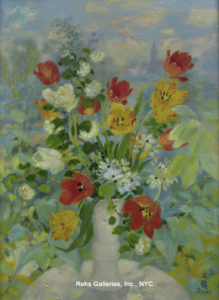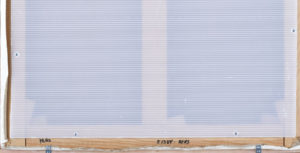As we have always said, every work has a provenance, but the full provenance of every work is not always known. Now, you should expect that when one of the major auction rooms offers a work, they will do their best to have as complete a provenance as possible. Well, as you will soon see, that is not always the case.
In November of 2019, our gallery acquired a beautiful still life by the Vietnamese artist Le Pho. In July, a collector of Vietnamese art purchased the painting and was very happy with it. In October, while looking through all the auction sites, we noticed that a Modern & Contemporary sale was taking place in Hong Kong and decided to see what was included. Lo and behold, the Le Pho we sold was in the sale with an estimate of HK$150-260K ($19,335-33,514) … which was much less than we sold it for. It seemed odd, but what do I know?
Anyway, while looking at the catalog entry, I noticed the following provenance:
Wally Findlay Galleries, USA
Acquired from the above gallery by the previous owner
Private Collection, USA
I found it strange that they were inferring that our gallery bought it from Wally Findlay, when, in fact, we bought it from a collector who acquired it years ago. Also, our name ‘Rehs’ and the inventory number are visible on the stretcher. On October 12th, I decided to write an email to Christie’s and let them know that their cataloging was incorrect.
I noticed that you are offering a painting by Le Pho – lot 19. Your provenance is not complete. We sold that painting this year (I assume to the seller).
https://rehs.com/Le_Pho_Les_Tulipes_Tulips_Viburnum_and_Anemones.html
You will also note in the image you feature on your site that the name REHS (along with our inventory number) is written at the bottom of the stretcher.
On the 15th I received a reply from Winnie Wan:
Dear Mr Rehs,
Thank you very much for highlighting the provenance of lot 19.
We generally do not include past auction records from auction houses apart from Christie’s and Sotheby’s. Hence, for us this auction record is considered complete. However, for any enquiries we can mention it.
Should you have further concerns, please feel free to contact us.
My reply to Ms. Wan:
We are not an auction house … we have an art gallery in New York City. We bought that painting and then sold it to the individual who is now selling it. [W]e owned the painting outright (had clear title), so your provenance is not complete as stated in the catalog. Of course, you can sell it as you see fit, but do note that I have now told you your provenance is incomplete.
I never received a reply. Now I am sure you are thinking, what did the painting make? HK$625,000 ($80,634) … yes, that was more than we sold it for.
The word ‘provenance’, according to the dictionary, is a record of ownership of a work of art or an antique, used as a guide to authenticity or quality. The key word here is ‘ownership.’ As a previous owner, the gallery’s name should have been included. Also, an auction room should almost never be included in the provenance since they never (or rarely) own the work being sold. They are a middleman, and as they have always stated, title passes from the seller to the buyer when the hammer falls.
We see this time and again, auction rooms leaving out parts of the provenance that might make the sale more difficult. The salerooms are always trying to make people believe they are being as transparent as possible … obviously, that is a bunch of …


